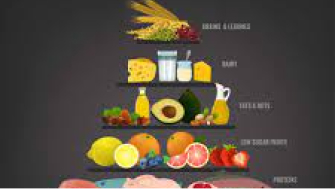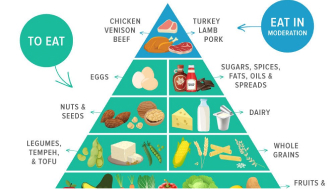What is Mayo Clinic Diet?
Weight Loss and a healthier lifestyle go hand in hand on the Mayo Clinic diet. You recalibrate your eating habits by breaking bad ones and replacing them with good ones with the help of the Mayo Clinic's unique food pyramid, which emphasizes fruits, vegetables and whole grain. In general, these foods have low caloric density, meaning you can eat more while taking in fewer calories.
Until recently, three editions of the "Mayo Clinic Diet" book and the Mayo Clinic diet website have been the primary guides to help people through its two phases. However, last year, the Mayo Clinic diet launched its online program that includes new options, tracking and habit-optimizing and group support features.
The new online program includes an app, meal plans and access to a private Mayo Clinic Facebook group among other members-only perks. In 2023, the program also launched unlimited group coaching sessions with Mayo Clinic diet experts, which provides even more support for those starting the diet.
- Family friendly-Family members can easily all eat the meals together with little or no modification. And the food options are healthy and balanced enough for all ages.
- Budget friendly-Foods for this diet are easy to find at a typical grocery and don't require expensive or specialty food items.
- Vegan or vegetarian friendly-Recipes can be easily modified for a [vegan or vegetarian diet].
- Gluten-free friendly-Recipes can be easily modified and still follow a [gluten-free]diet.
- Halal friendly-Recipes can be easily modified and still follow the diet.
- Kosher friendly-Recipes can be easily modified and still follow the diet.
- Low-fat-The diet encourages a moderate consumption of [healthy fats], like monounsaturated and polyunsaturated fats from [olive oil], and discourages unhealthy fats, such saturated fats from fried and processed foods. Less than about 30% of total calories come from fat.
How Does It Work?
The Mayo Clinic diet is a 12-week program that is designed to establish healthy habits for life using evidence-based behavioral science.
The program consists of two phases:
- "Lose it!"The first two weeks of the program focuses on lifestyle habits that contribute to your weight, specifically adopting 10 healthy habits and breaking five unhealthy habits. You don't count calories, and you can snack all you want on fruits and [vegetables]. The Mayo Clinic diet states you can potentially lose up to 6 to 10 pounds during this phase.
- "Live it!"In this phase, you'll learn about making smart food choices, portion sizes, meal prepping, physical activity, exercise and committing to healthy habits for life. Since you're developing a pattern of [healthy eating] to follow for life, no food group is completely off-limits.
"Lose it!"
You'll add a healthy breakfast, lots of fruits and veggies, whole grains, healthy fats and at least 30 minutes of physical activity a day. You'll ban eating while watching TV, sugar (except from fruit), snacking (except on fruits and veggies), consuming too much meat and full-fat dairy and eating out (unless the food you order follows the rules). If you're really motivated, you'll also adopt bonus habits such as keeping food, activity and goal diaries; exercising 60 minutes or more per day; and eating natural or minimally processed "real food."
"Live it!"
You'll use what you learned in the first phase but be allowed to occasionally break the rules. You'll also calculate the number of calories you can eat while still losing a couple of pounds a week. But instead of counting the calories in every grain of brown rice you eat, you'll focus on servings, fats and proteins.
Round out "Live it!" with regular physical activity, and you're set for life.
The Mayo Clinic diabetes diet emphasizes foods that are naturally rich in nutrients and low in fat and calories, such as fruits, mackerel and tuna; and good fats, which include avocados, almonds, olives and walnuts.
Can I Lose Weight on the Mayo Clinic Diet?
The Mayo Clinic diet ranked No. 3 (tied) among U.S. News'
By sticking with the Mayo Clinic diet, you may be able to shed 6 to 10 pounds during the first two weeks and continue losing 1 to 2 pounds weekly until you’ve hit your goal weight. However, Hensrud notes that weight loss isn't the ultimate goal of the Mayo Clinic diet.
Short-Term Weight Loss
- In general, eating more foods with low-caloric density has been [shown to promote weight loss], according to the Centers for Disease Control and Prevention.
- In a 2008 pilot program that evaluated 53 Mayo Clinic employees with obesity who followed "Lose it!" for two weeks, the average weight loss was 8 pounds.
- In one study, nearly 100 women who were overweight or had obesity participated in a 14-week trial. The group following a low-caloric-density diet like the Mayo Clinic diet reported fewer [cravings], showed greater weight loss and had a higher reduction in fat mass.
Long-Term Weight Loss
- One review that investigated dietary energy density and long-term weight management concluded that low-energy-density diets are effective at increasing satiety while reducing energy intake. It noted that when reducing the amount of calories in food but keeping the overall food weight the same, it's “feasible to consume less energy and (feel) more full, and achieve a healthy body weight.”
"If you stick with this plan over a long period of time, you should lose weight, and the app with numerous trackers makes it possible to follow over the long haul,” says Toby Amidor, an award-winning nutrition expert and Wall Street Journal bestselling author of “Diabetes Create Your Plate Meal Prep Cookbook,” who is not affiliated with the diet. “There's so much involved in getting into this plan, I wouldn't suggest it if you're looking for a quick fix - which isn't a healthy way to lose weight anyhow.”
Who Should Not Try the Mayo Clinic Diet?
If you're pregnant, discuss individual nutrition and weight considerations with your doctor before embarking on any diet. If you have obesity or are overweight, you and your OB-GYN should work together to develop a nutrition and exercise plan, the American College of Obstetricians and Gynecologists recommends.
What Does the Mayo Clinic Diet Cost?
As of June 2023, you can join starting at $4.61 per week for a 12-month commitment, or pay for just one month at $11.54 per week. Members use the Mayo Clinic diet login page to access Mayo Clinic meal plans, guidance on health topics like sleep and goal setting, virtual group video sessions with doctors and more members-only benefits.
Pros
- Nutritionally sound
- Coaching and/or group support available
- Filling - it's rich in high-fiber foods.
- A clearly defined plan with recipes
- Has proven health benefits.
Cons
- Eating out is limited
- Lots of rules to remember
- You'll likely get hungry
Recipes
- Baked Pesto Salmon
- Fish Taco Salad
- Simple Hoisin Beef Stir-Fry
- Greek Pasta Salad
- Classic Chicken Salad
- One-pan Sweet Chili Chicken & Vegetables
- Easy Nicoise
- Tuna Garden Salad
- Spinach & Mushroom Egg Muffins
- Sared Fish with Carrots & Broccolini
For Images:
Was this article helpful?
Similar Articles


